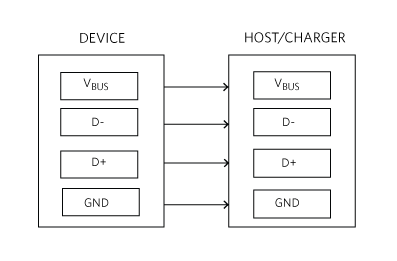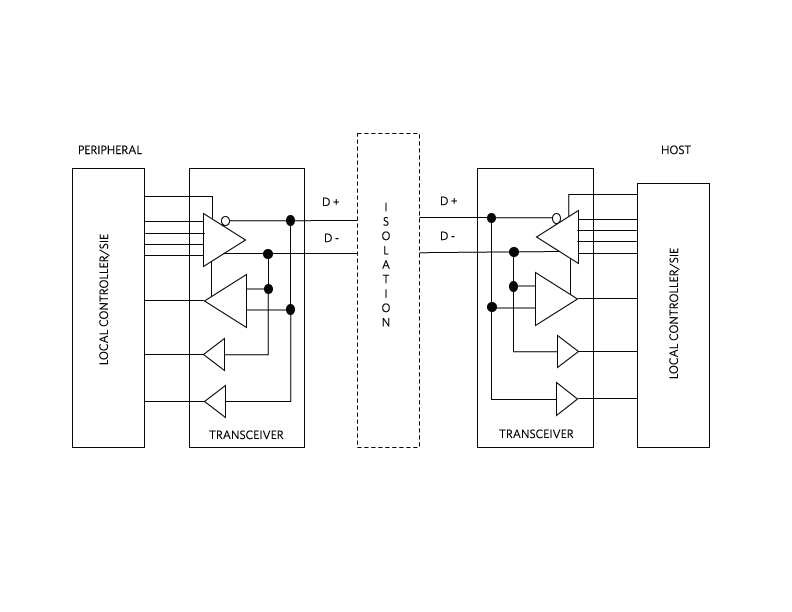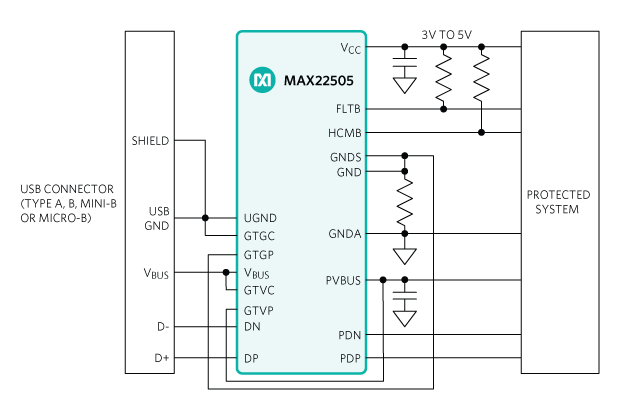By Michael Jackson, senior technical writer, Maxim Integrated and Timothy Leung, executive business manager, Industrial and Healthcare Business Unit, Maxim Integrated
The universal serial bus (USB) was originally designed as a means for transferring data and power to external peripherals connected to computers. Today, it is also used to transfer data and supply power to a multitude of low-power portable devices. The USB port has quickly become a near-ubiquitous feature on most consumer electronic devices and, more recently, has begun to appear on commercial and industrial equipment operating in high-voltage (>20 V) environments (Fig. 1 ). However, the proximity of high voltages to a low-voltage USB port presents a safety hazard to any device connected to the port itself and, potentially, for its user. If, due to a fault or other reason, both voltage domains were to come into contact, the result could be dangerous

Fig. 1: Charging a mobile phone on an airplane.
In this design solution, we will review the conventional approaches to protecting USB ports from high voltages and the consequent limitations that these approaches place on port performance. We then propose an alternative approach that does not compromise the safety or speed of USB port functionality for either the users or their connected devices.
USB review
USB is a four-wire interface used to connect an upstream host charger to a downstream device (Fig. 2 ). VBUS (+5 VDC) and GND (0 V) are the power pins while D+ and D– are used for either differential or single-ended data transfer. The data is organized into data frames or packets. Each frame can contain bits for clock synchronization, data type identifier, device address, data payload, and an end-of-packet sequence.
 Fig. 2: Block diagram of a USB pin interface.
Fig. 2: Block diagram of a USB pin interface.
Data transfer takes place at speeds of either 1.5 Mbits/s (low speed), 12 Mbits/s (full speed), or 480 Mbps (high speed) using a range of connectors with different form factors. Types A, B, mini-B, and micro-B are the most common connector types.
Approaches to USB protection
Control of the USB data structure is handled at each end of the cable by a serial interface engine (SIE). This specialized controller, or subset of a larger controller, usually includes the USB transceiver hardware that handles the USB protocol.
When a peripheral is first connected to the cable, the SIE provides the host with the configuration information and power requirements. During operation, the SIE formats all data according to the required transfer speed and provides error checking and fault handling. The SIE handles bus flow control and enables or disables the line drivers and receivers as necessary. The host initiates all transactions, which then follow a sequence of data exchanges between host and peripheral. This includes provisions for when data is corrupted or other faults that may occur.
Common IC solutions for USB data channel protection use process isolation technology to ensure that no current path can exist between the high-voltage equipment and the low-voltage device. This involves using an isolation IC at a location between the controllers (Fig. 3 ).

Fig. 3: Isolation placed between USB controllers.
While this ensures that the USB port can continue to operate normally, even when exposed to voltages up to 5 kV, this approach allows data transfer rates only up to 12 Mbits/s.
Some IC solutions are limited in that they provide only upstream protection (i.e., the host side is protected but not the downstream device). Also, some isolation ICs protect the data transfer pins (D+/D–) but not the power pins (VBUS /GND). It is possible to construct a smaller, custom USB protection circuit using discrete components. However, because many components are required, this solution is very complex while still allowing data transfer at only 12 Mbits/s.
Protection without isolation
An alternative integrated solution to USB port protection for commercial and industrial equipment is shown in Fig. 4 .
 Fig. 4: MAX22505 USB protection solution.
Fig. 4: MAX22505 USB protection solution.
The MAX22505 solution protects a USB port from faults while allowing data transfer rates up to 480 Mbits/s. The device ensures that the USB port is fully protected if exposed to the voltage levels typically encountered in industrial and commercial environments (±24 VAC or ±40 VDC). In the case of a wiring fault, which brings the USB port into contact with a high voltage, this IC responds by effectively “open-circuiting” the connection to the port, thus protecting both the upstream host and any connected downstream device. No data transfer can take place until the fault has been resolved.
Another benefit is board-space savings. This solution requires an area of only 120 mm2 , representing a savings between 20% and 50% (compared to other solutions). In addition, all USB port pins are protected in the event of a fault (±50 VDC for power and ±40.7 V for data), with no configuration required.
Conclusion
While originally a common feature present on low-voltage consumer electronic products, the USB port is increasingly being used as a power and data transfer interface on high-voltage commercial and industrial equipment. The potential hazard that this presents to users of peripherals connected to such ports means that some form of protection is essential.
Current approaches to USB port protection have focused on port isolation. However, this comes with the caveat of slowing USB performance to the extent that it can support data transfer rates only up to 12 Mbits/s while offering only asymmetric protection. An alternative approach to USB port protection allows high-speed data transfer (480 Mbits/s) while also fully protecting both upstream equipment and downstream connected devices. These benefits make it suitable for use in equipment such as industrial PCs, PLCs, and for both diagnostic and general-purpose USB ports on industrial and commercial equipment.
Note: An evaluation kit (MAX22505EVKIT) is available for the MAX22505.
About the authors:
Michael Jackson has over 20 years’ professional experience as an analog IC design engineer and holds the position of senior technical writer at Maxim Integrated. He has a MSEE from Dublin City University.
Timothy Leung is executive business manager in the Industrial and Healthcare Business Unit of with Maxim Integrated. He holds a B.A in Industrial Engineering from Cal Poly San Luis Obispo
Advertisement
Learn more about Electronic Products MagazineMaxim Integrated





